00
01
Element-Level Analysis (Google’s PageRank)
Group-Level Analysis (Political Ties)
Network-Level Analysis (Oracle of Bacon)
02
Graph Theory
Essential Problems and Algorithms
Connected Components
Distances and Shortest Paths
Network Flow
Graph k-Connectivity
Linear Programming
NP-Completeness
Algebraic Graph Theory
Probability and Random Walks
Chapter Notes
03
Introductory Examples
A Loose Definition
Distances and Neighborhoods
Degree
Facility Location Problems
Structural Properties
Shortest Paths
Stress Centrality
Shortest-Path Betweenness Centrality
Reach
Traversal Sets
Derived Edge Centralities
Edge Centralities Derived from Vertex Centralities
Vitality
Flow Betweenness Vitality
Closeness Vitality
Shortcut Values as a Vitality-Like Index
Stress Centrality as a Vitality-Like Index
Current Flow
Electrical Networks
Current-Flow Betweenness Centrality
Current-Flow Closeness Centrality
Random Processes
Random Walks and Degree Centrality
Random-Walk Betweenness Centrality
Random-Walk Closeness Centrality
Feedback
Counting All Paths – The Status Index of Katz
General Feedback Centralities
Web Centralities
Dealing with Insufficient Connectivity
Intuitive Approaches
Cumulative Nominations
Graph- vs. Vertex-Level Indices
Chapter Notes
04
Basic Algorithms
Shortest Paths
Shortest Paths Between All Vertex Pairs
Dynamic All-Pairs Shortest Paths
Maximum Flows and Minimum-Cost Flows
Computing the Largest Eigenvector
Centrality-Specific Algorithms
Betweenness Centrality
Shortcut Values
Fast Approximation
Approximation of Centralities Based on All Pairs Shortest Paths Computations
Approximation of Web Centralities
Dynamic Computation
Continuously Updated Approximations of PageRank
Dynamically Updating PageRank
05
Normalization
Comparing Elements of a Graph
Comparing Elements of Different Graphs
Personalization
Personalization for Distance and Shortest Paths Based Centralities
Personalization for Web Centralities
Four Dimensions of a Centrality Index
Axiomatization
Axiomatization for Distance-Based Vertex Centralities
Axiomatization for Feedback-Centralities
Stability and Sensitivity
Stability of Distance-Based Centralities
Stability and Sensitivity of Web-Centralities
06
Perfectly Dense Groups: Cliques
Computational Primitives
Finding Maximum Cliques
Approximating Maximum Cliques
Finding Fixed-Size Cliques
Enumerating Maximal Cliques
Structurally Dense Groups
Plexes
Cores
Statistically Dense Groups
Dense Subgraphs
Densest Subgraphs
Densest Subgraphs of Given Sizes
Parameterized Density
Chapter Notes
07
Fundamental Theorems
Introduction to Minimum Cuts
All-Pairs Minimum Cuts
Properties of Minimum Cuts in Undirected Graphs
Cactus Representation of All Minimum Cuts
Flow-Based Connectivity Algorithms
Vertex-Connectivity Algorithms
Edge-Connectivity Algorithms
Non-flow-based Algorithms
The Minimum Cut Algorithm of Stoer and Wagner
Randomized Algorithms
Basic Algorithms for Components
Biconnected Components
Strongly Connected Components
Triconnectivity
Chapter Notes
08
Quality Measurements for Clusterings
Coverage
Conductance
Performance
Other Indices
Summary
Clustering Methods
Generic Paradigms
Algorithms
Bibliographic Notes
Other Approaches
Extensions of Clustering
Axiomatics
Chapter Notes
09
Role Assignments
Preliminaries
Role Graph
Structural Equivalence
Lattice of Equivalence Relations
Lattice of Structural Equivalences
Computation of Structural Equivalences
Regular Equivalence
Elementary Properties
Lattice Structure and Regular Interior
Computation of Regular Interior
The Role Assignment Problem
Existence of k-Role Assignments
Other Equivalences
Exact Role Assignments
Automorphic and Orbit Equivalence
Perfect Equivalence
Relative Regular Equivalence
Graphs with Multiple Relations
The Semigroup of a Graph
Winship-Pattison Role Equivalence
Chapter Notes
10
Deterministic Models
Measuring Structural Equivalence
Multidimensional Scaling
Clustering Based Methods
CONCOR
Computing the Image Matrix
Goodness-of-Fit Indices
Generalized Blockmodeling
Stochastic Models
The p1 Model
Goodness-of-Fit Indices
Blockmodels and p1
Posterior Blockmodel Estimation
p* Models
Chapter Notes
11
Degree Statistics
Distance Statistics
Average or Characteristic Distance
Radius, Diameter and Eccentricity
Neighborhoods
Effective Eccentricity and Diameter
Algorithmic Aspects
ANF – The Approximate Neighborhood-Function
The Number of Shortest Paths
Distortion
Clustering Coefficient and Transitivity
Definitions
Relation Between C and T
Computation
Approximation
Network Motifs
Algorithmic Aspects
Types of Network Statistics
Transformation of Types of Statistics
Visualization
Sampling of Local Statistics
Chapter Notes
12
Graph Isomorphism
A Simple Backtracking Algorithm
McKay’s Nauty Algorithm
The Difficulty of GI or ‘How to Trick Nauty’
Graph Similarity
Edit Distance
Difference in Path Lengths
Maximum Common Subgraphs
Other Methods
Chapter Notes
13
Fundamental Models
The Graph Model (Gn,p)
Small World
Local Search
Power Law Models
Global Structure Analysis
Finding Power Laws of the Degree Distribution
Generating Functions
Graphs with Given Degree Sequences
Further Models of Network Evolution
Game Theory of Evolution
Deterministic Impact of the Euclidean Distance
Probabilistic Impact of the Euclidean Distance
Internet Topology
Properties of the Internet’s Topology
INET – The InterNEt Topology Generator
Chapter Notes
14
Fundamental Properties
Basics from Linear Algebra
The Spectrum of a Graph
The Laplacian Spectrum
The Normalized Laplacian
Comparison of Spectra
Examples
Numerical Methods
Methods for Computing the Whole Spectrum of Small Dense Matrices
Methods for Computing Part of the Spectrum of Large Sparse Matrices
Subgraphs and Operations on Graphs
Interlacing Theorem
Grafting
Operations on Graphs
Bounds on Global Statistics
Proof of Theorem 14.4.7
Heuristics for Graph Identification
New Graph Statistics
Spectral Properties of Random Graphs
Random Power Law Graphs
Chapter Notes
15
Worst-Case Connectivity Statistics
Classical Connectivity
Cohesiveness
Minimum m-Degree
Toughness
Conditional Connectivity
Worst-Case Distance Statistics
Persistence
Incremental Distance and Diameter Sequences
Average Robustness Statistics
Mean Connectivity
Average Connected Distance and Fragmentation
Balanced-Cut Resilience
Effective Diameter
Probabilistic Robustness Statistics
Reliability Polynomial
Probabilistic Resilience
Chapter Notes
99


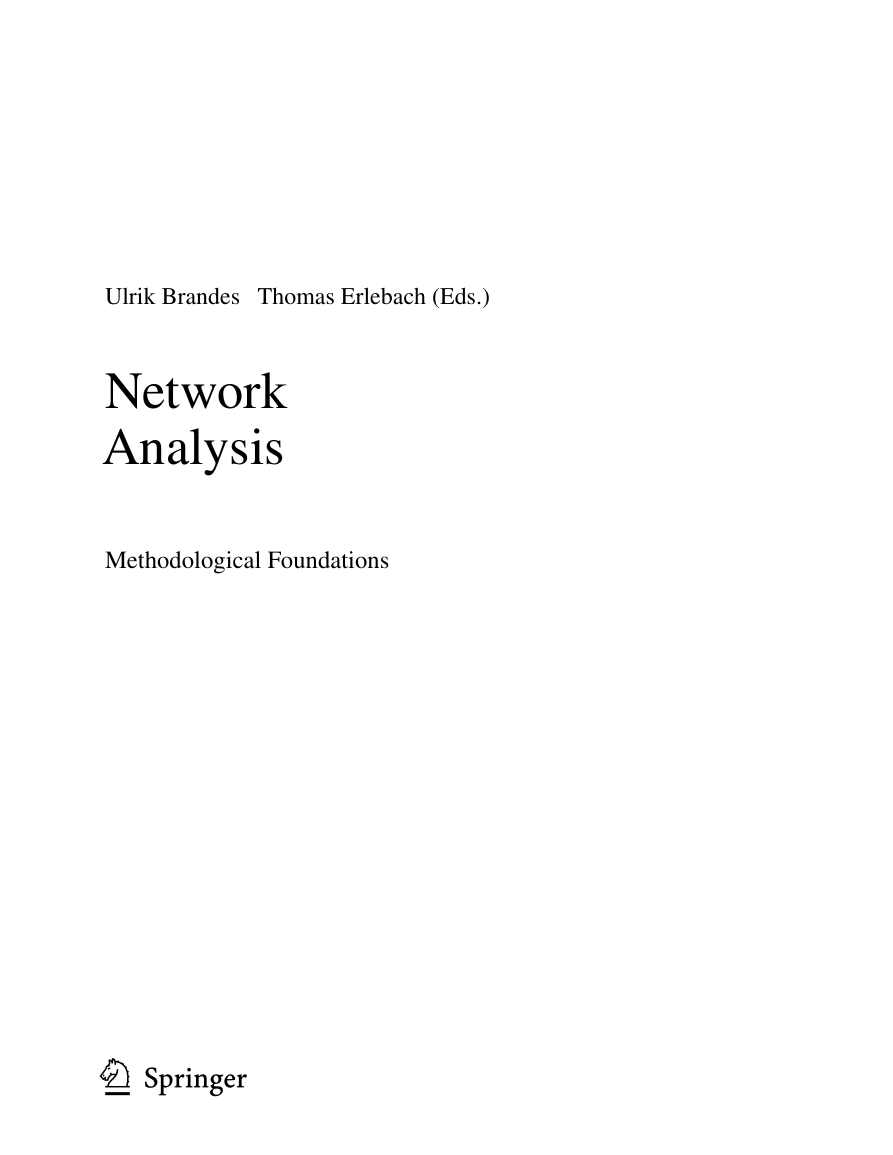
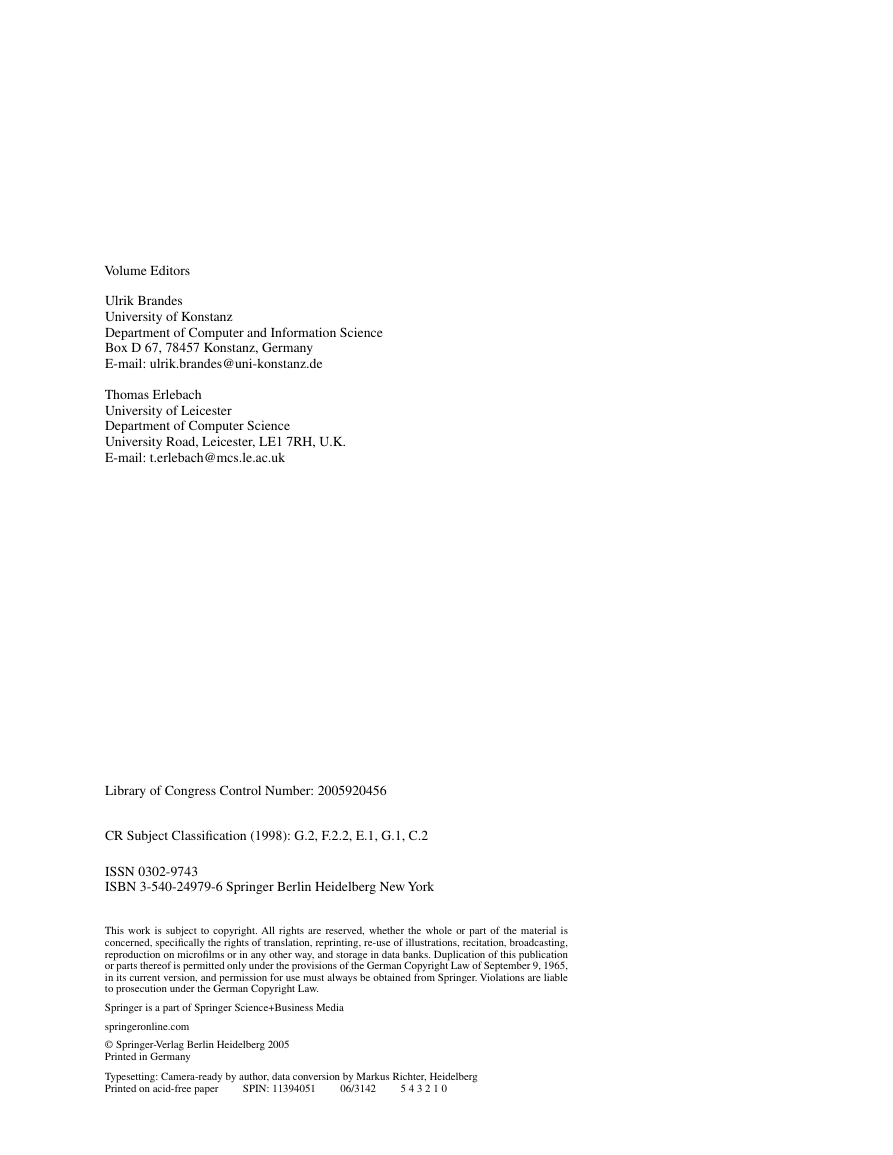
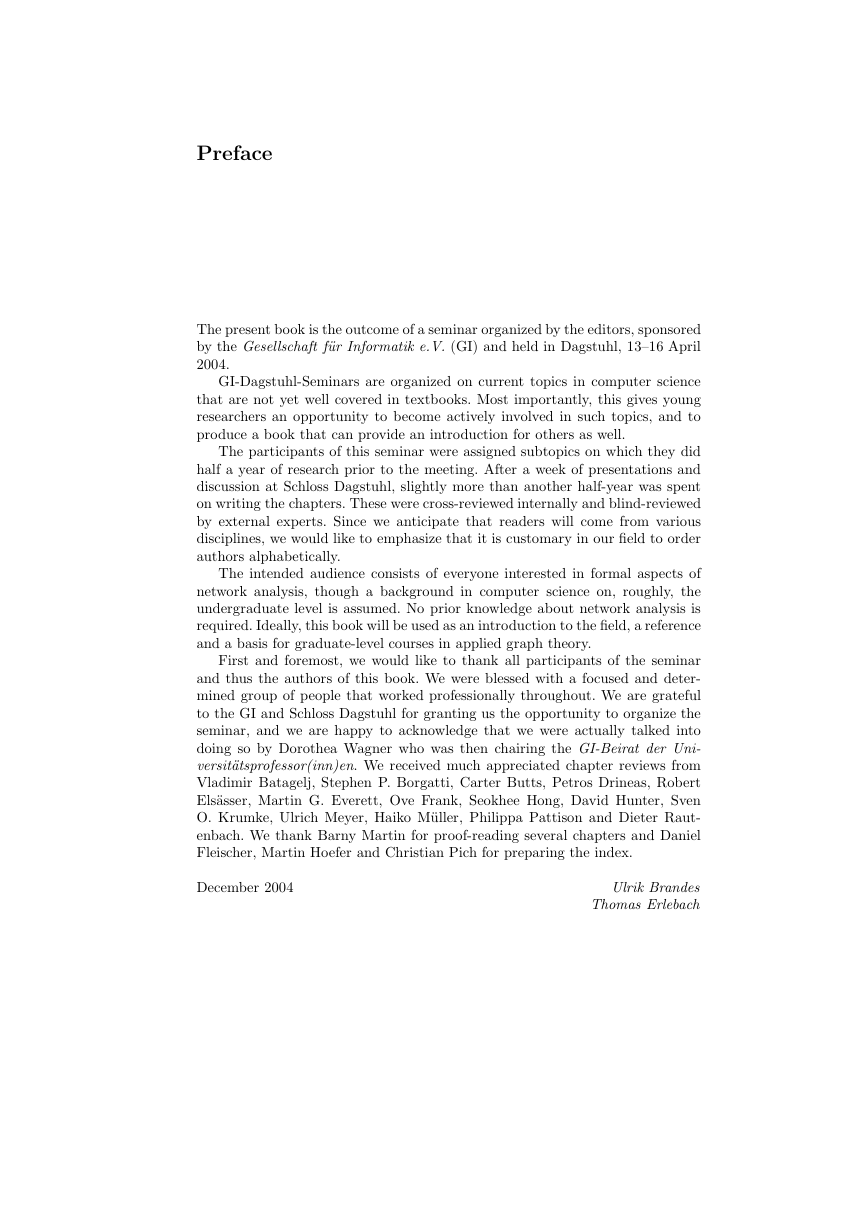

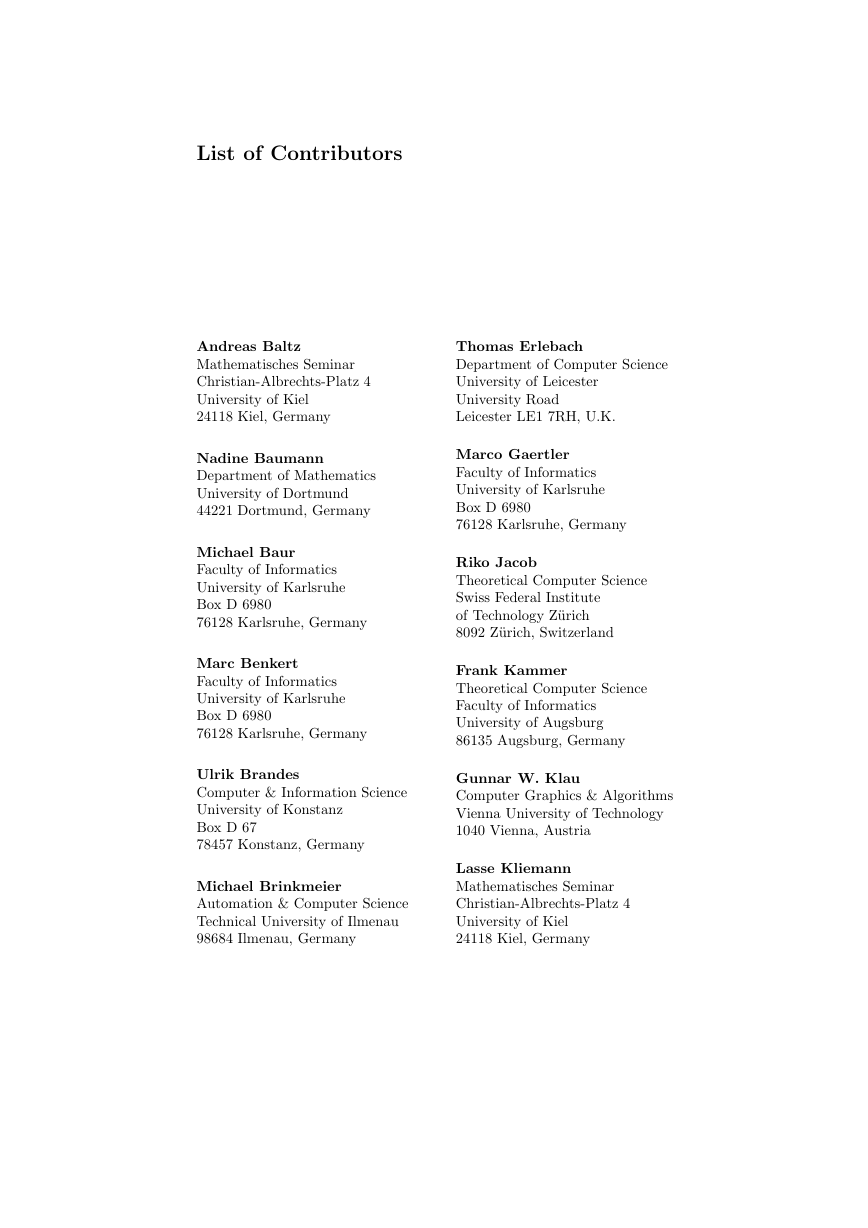
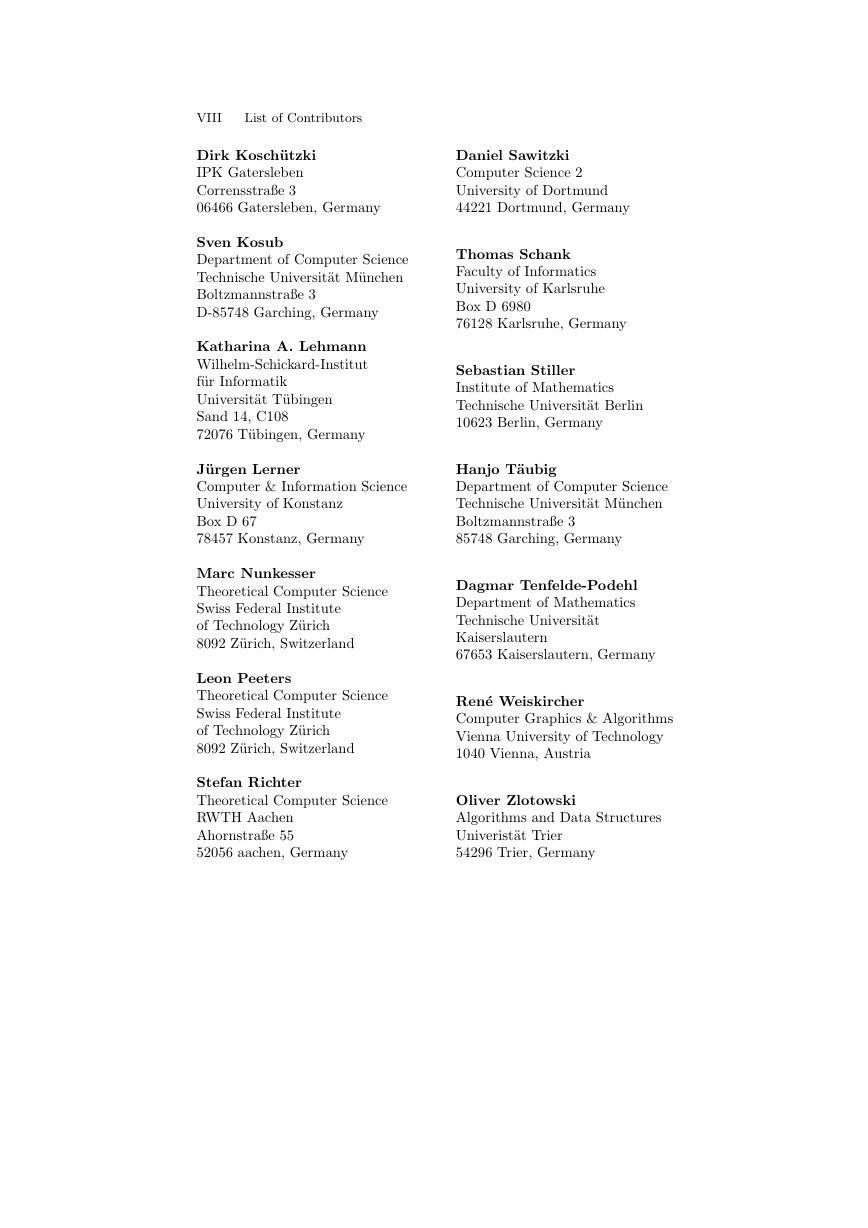








 2023年江西萍乡中考道德与法治真题及答案.doc
2023年江西萍乡中考道德与法治真题及答案.doc 2012年重庆南川中考生物真题及答案.doc
2012年重庆南川中考生物真题及答案.doc 2013年江西师范大学地理学综合及文艺理论基础考研真题.doc
2013年江西师范大学地理学综合及文艺理论基础考研真题.doc 2020年四川甘孜小升初语文真题及答案I卷.doc
2020年四川甘孜小升初语文真题及答案I卷.doc 2020年注册岩土工程师专业基础考试真题及答案.doc
2020年注册岩土工程师专业基础考试真题及答案.doc 2023-2024学年福建省厦门市九年级上学期数学月考试题及答案.doc
2023-2024学年福建省厦门市九年级上学期数学月考试题及答案.doc 2021-2022学年辽宁省沈阳市大东区九年级上学期语文期末试题及答案.doc
2021-2022学年辽宁省沈阳市大东区九年级上学期语文期末试题及答案.doc 2022-2023学年北京东城区初三第一学期物理期末试卷及答案.doc
2022-2023学年北京东城区初三第一学期物理期末试卷及答案.doc 2018上半年江西教师资格初中地理学科知识与教学能力真题及答案.doc
2018上半年江西教师资格初中地理学科知识与教学能力真题及答案.doc 2012年河北国家公务员申论考试真题及答案-省级.doc
2012年河北国家公务员申论考试真题及答案-省级.doc 2020-2021学年江苏省扬州市江都区邵樊片九年级上学期数学第一次质量检测试题及答案.doc
2020-2021学年江苏省扬州市江都区邵樊片九年级上学期数学第一次质量检测试题及答案.doc 2022下半年黑龙江教师资格证中学综合素质真题及答案.doc
2022下半年黑龙江教师资格证中学综合素质真题及答案.doc